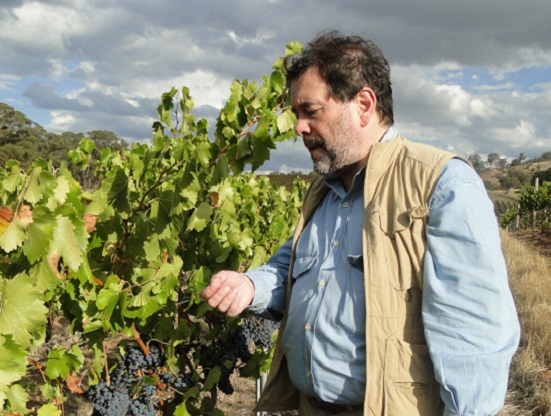Chapoutier Australia has just disclosed a report on the 2014 harvest. Here is the full report:
“More generous in terms of yields than previous years, without losing density and freshness, 2014 is already stunning while harvests have just ended in Chapoutier Australia’s vineyards. Inputs of compost and sowing cereals have already been prepared for 2015 and the first grapes harvested early March have just begun to deliver their great potential. So now is the right time for a first assessment.”
“Winter 2013 has been in the standards of the last five vintages in the Pyrenees vineyards. Rainfalls were heterogeneous between sites and water reserves were correct at the end of the winter in Shays Flat and Malakoff but slightly lower in Landsborough. An early mild spring brought a homogeneous budburst among grape varietals. Coupled with the great vitality of soils covered with cereals and legumes, these conditions have ensured the rapid development of the leaf surface and less competition between growth and flowering. It was enough to offset the negative effects of devastating frosts in the country, at the heart of this soft period. The vineyards of Heathcote (Lady’s Lane and La Pleiade) have also been more affected than the Syrah plots in the Pyrenees. Yield losses were however limited to about 2 % and the slowdown in growth resulted in a phenological gap of around 2 to 3 weeks with areas spared by frosts.”
“Flowering took place with excellent weather conditions – dry and moderately warm -, optimally enhancing the rather generous flowers’ growth. The period from November to January was a little cooler than the average – but not watered – which made lost some phenological advance while maintaining beneficial water stress on berries during the phase of herbaceous growth. At this stage, much of the quality of the vintage had already been reached as the early growth associated with smaller berries which could do nothing but facilitate the concentration.”
“Phenological delay induced by the relative cooling period (but also locally by the frosts) has allowed a maturation in more temperate than usual conditions, which contributed to the aromatic benefit. Low rainfall during the summer limited potassium removals – schists are particularly rich in potassium -, and thus helped maintain high acidity in musts. In short, the harvest that started on Shays Flat on March 10th and completed on L- Block (Malakoff) in mid-April will deliver a concentrated vintage – particularly on Landsborough – with a great aromatic and structural freshness.”
“The first rackings (“décuvages”) delivered powerful, salty and sappy juice, expressing the whole race of Syrah on schists from the Pyrenees vineyards. Malolactic fermentation and maturing aim to patinate the easily recognizable wild grain of these continental crus. The wines of Heathcote have fully benefited, from a stylistic point of view, from the delay imposed by the episodes of cold spring and show at this stage a mouth-watering grainy texture, rather atypical on these basaltic soils which usually deliver round wines under a more southern climate. The ageing will better define the specificity of the vintage.”
(Write to info@vitabella.fr)



